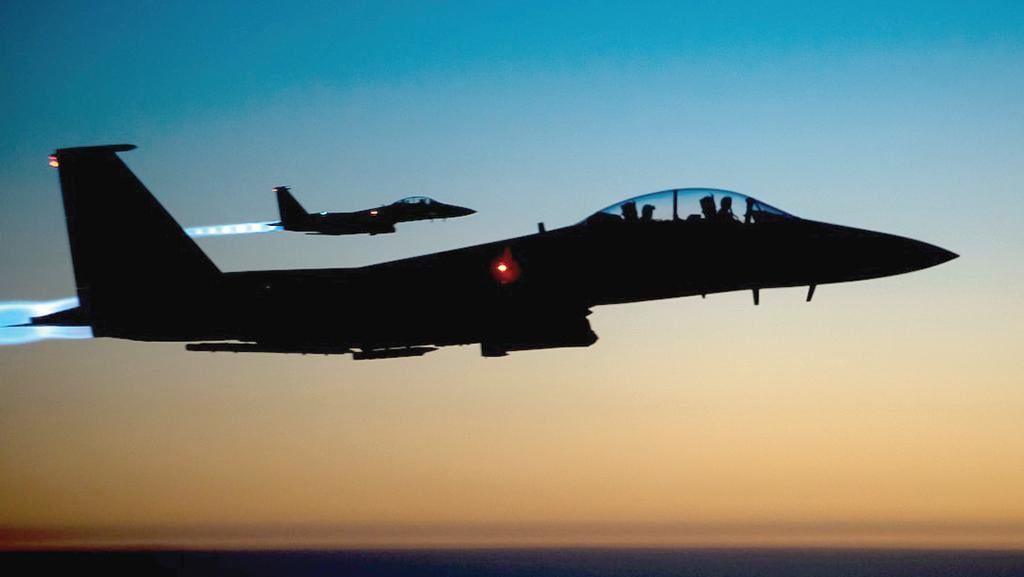Opinion: Inside The Battle Of Khasham In Syria

More than three years after it took place in February 2018, the Battle of Khasham remains one of the most dramatic and mysterious events of the Syrian civil war. U.S. forces obliterated a column of pro-government forces during the battle, reportedly including dozens of members of the Wagner Group, a Russian private military contractor. The toll of air- and ground-launched munition strikes reportedly left hundreds dead on the pro-government side—the U.S. side reported no casualties—but details of the battle, including the role of U.S. and Russian combat aircraft, remain scant and conflicted.
A forthcoming book, The U.S. War Against ISIS: How America and its Allies Defeated the Caliphate, by Aaron Stein, director of the Middle East Program at the Foreign Policy Research Institute, provides the first definitive account of the battle, including details of U.S. Special Forces’ involvement and the role of U.S. fighter pilots in keeping the Russian Air Force from intervening. Stein provided Aviation Week an exclusive excerpt from the book.
In the skies over Deir el-Zour, the U.S. Air Force and the Russian Air Force engaged in some of the most aggressive confrontations of the war.
In February 2018, Russian private military contractor the Wagner Group tested the ground deconfliction agreement by looking to expand the Russian presence east of the Euphrates River. The United States retained a small garrison near the Conoco Oil plant.
As the Russian buildup began, the United States dispatched Delta Force to the area to augment the Special Forces and Army Rangers already in place and to bolster any potential defense of the U.S. position. “The Delta guys were sent there,” a person familiar with the incident explained, “and they were looking at river crossings.” As it would turn out, the Russian force crossed at the crossing point that the U.S. had agreed to in the talks over deconfliction. “They launched this operation from that same 1 km by 4 km river crossing that they had carved out in 2017.”
The Russians got pretty close, and the U.S. forces were talking to them on the deconfliction line. “The first call,” the official continued, “was just explaining to them what we were seeing. We were seeing artillery and a Multiple Launch Rocket System throwing rockets around, and so on the second call we asked again: Is that you? The Russians said it wasn’t them. We reiterated that the next call would be to tell them that we are taking action. The Russians again responded it was not them.”
The trigger, as it would turn out, was that the Wagner Group began to bracket-fire the American outpost with artillery, which refers to using spotting rounds to calibrate the aim to then walk the shell onto the target. “Once the rounds fell in front and back of the guys, we knew we were being bracketed, and it was clear that this was self-defense. At that point, a radio call went out: ‘Cleared hot,’ and everything just started to evaporate,” said an official familiar with the Wagner incident.
The American response included F-15E Strike Eagles, AC-130 gunships, attack helicopters and armed drones.
“The robots were Winchestered,” an Air Force officer quipped, using slang to describe how the armed drones flying overhead ran out of missiles. “The controlling JTAC [Joint Terminal Attack Controller] was out of breath from doing so many 9 lines.” A “9 line” refers to the targeting brief that a Joint Terminal Attack Controller sends to a pilot for releasing a precision-guided munition.
During the fracas, “Russian Su-30s launched but were held far away by U.S. pilots who had targeted them but had held fire as the other assets were striking targets on the ground,” a U.S. Air Force official said.
The Su-30s were pinned down, an official explained, “because they were spread on azimuth,” meaning that each aircraft was flying directly off the wing of the other at a range of 500-3,000 ft., which because of “bleed over” from the radar makes it easier to place under missile lock.
“The Russians didn’t have any surface-to-air fires,” the official continued, so with the Su-30s pinned down, there was little to stop the American onslaught.
The engagement, an official explained, “was not quick, but it was decisive, and once it was green-lit, there was little left on their side.”
I.B. Tauris, the publisher, is scheduled to release Stein’s book on Jan. 27, 2022.





Comments
The Role of Airpower in Operation Inherent Resolve”, presents a good account of this incident and a broader “open source” survey of the application of airpower against IS in Syria/Iraq.